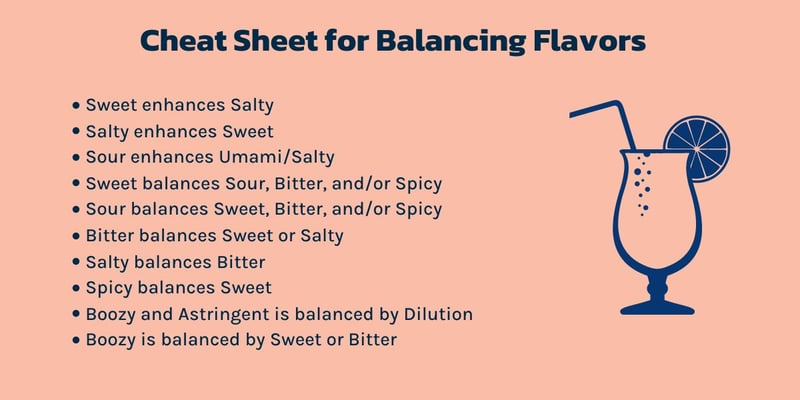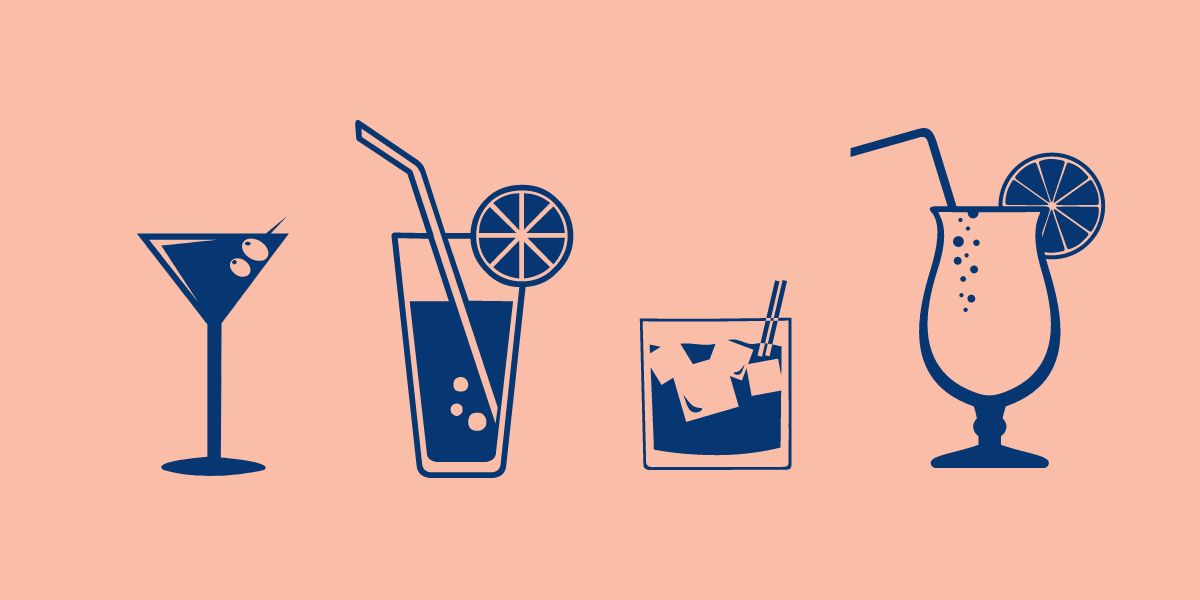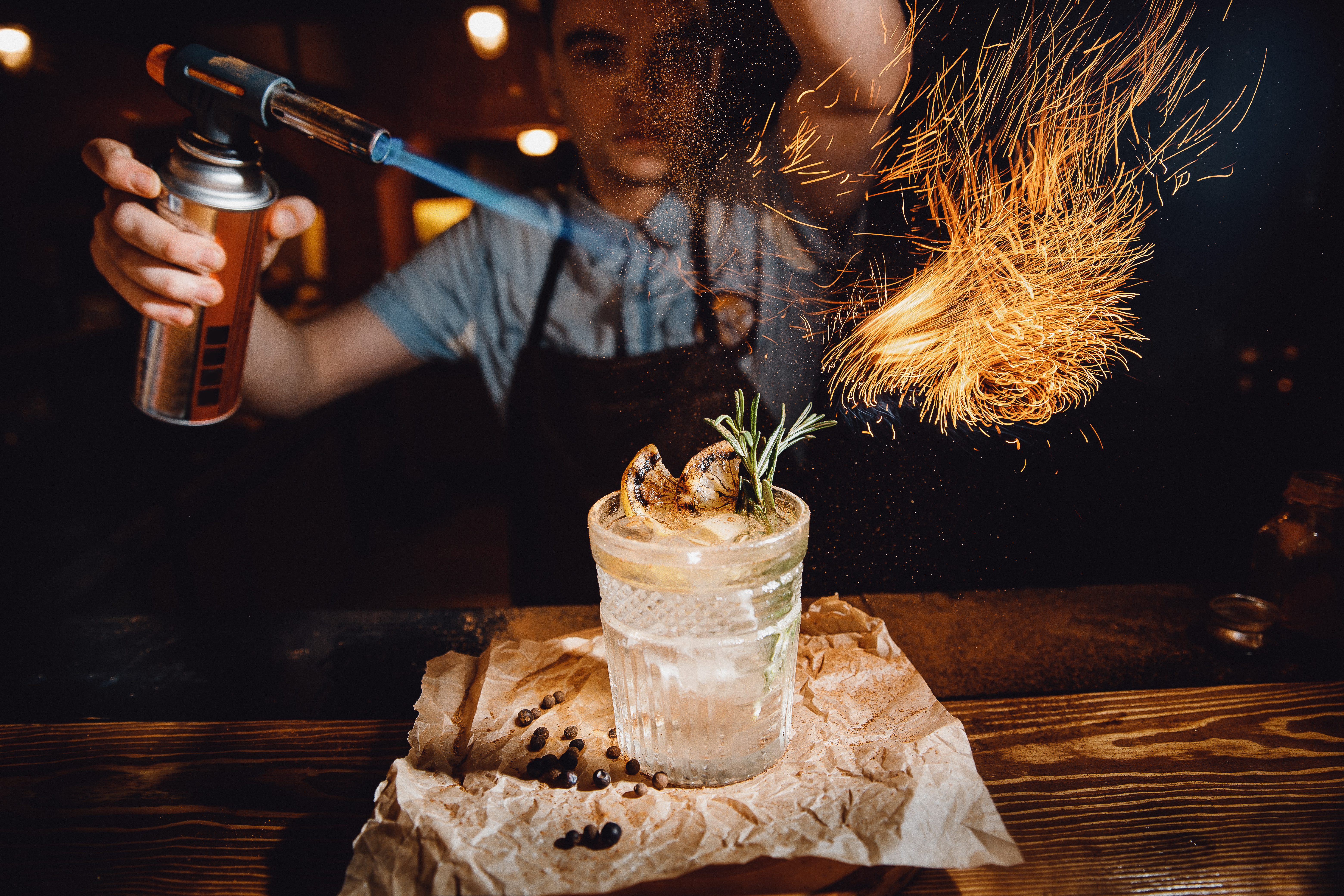Cocktail creation, or mixology as it is often referenced as, is an art form that combines creativity and precision to create a perfect balance of flavors in a cocktail. A bartender’s skill lies in the ability to blend different ingredients together to create a drink that’s both delicious and visually appealing to consumers. But behind the art, there's a science to making the perfect drink. That’s why it’s vital for a bartender to fully understand the chemistry behind each ingredient and how they play off one another to create a harmonious and balanced drink that their guests will enjoy.
While covering the entire scientific process that happens in a cocktail is best reserved for a larger format, say a book, let’s break it down at a high level and reveal the various tools, methods and techniques that go into making our favorite drinks.
For up-and-coming bartenders, at-home enthusiasts, or those genuinely interested in the science of cocktails, let’s start at the very foundation of what makes a great one: balance.

It seems simple, and in theory, it is, but in practice, finding balance between a selection of ingredients is an art form in and of itself. Learning how to understand why certain ingredients work together and why others don’t is essential to achieving a balanced drink.
One famous cocktail that best exemplifies balance is the classic Daiquiri. A perfectly balanced Daiquiri relies on the tartness of fresh lime juice, the sweetness of sugar and the tropical flavors of rum. Without either one of these ingredients, the cocktail would simply not work.
We call these three-ingredient drinks trinity cocktails.
Not accounting for the water that dilutes a cocktail when shaken or stirred with ice (the silent 4th ingredient), trinity cocktails are the bedrock for hundreds of the most beloved classic cocktails. These include the three-ingredient Martini, Negroni, Daiquiri and Daisy (a precursor to the Margarita). Just like with cooking, understanding how acids need fat or sweetener to become balanced is foundational for bartenders, too.
The Physics and Chemistry Happening in Your Glass
When it comes to making cocktails, there's a lot more science involved than one might initially think. Physics and chemistry both play a significant role in creating the perfect drink — from the way the ingredients interact with each other to the way they're mixed and served.
Temperature is Key
One of the most important and often overlooked factors in cocktail-making is temperature. Depending on the cocktail, different temperatures can create vastly different flavors and textures. For example, a hot toddy is a warm and comforting drink that's perfect for cold winters, while a frozen margarita is a refreshing treat at the height of summer. When bartenders create a cocktail, it's important to consider the temperature of each ingredient and how they'll interact with each other.
Whether You Stir or Shake, Proper Dilution Makes The Difference
Another key element in cocktail-making is dilution. This is the process of adding water to a drink to help balance out the flavors and make it more drinkable. Dilution can happen naturally over time as ice melts in a drink, or it can be added intentionally by stirring or shaking the ingredients. The amount of dilution can greatly affect the taste and texture of a cocktail, so it's important to get it just right.
Stirring and shaking are the two most common methods of making a cocktail. Both methods are used to mix the ingredients together and create a smooth, consistent texture. Stirring is typically used for cocktails that are meant to be sipped slowly, like a Martini, while shaking is used for drinks that are meant to be served cold and refreshing, like a Daiquiri.
A common rule of thumb is to shake when citrus is involved in the recipe and stir if there's not. If a cocktail’s ingredients are mostly, or made entirely of spirits (such as a Negroni), it should be stirred. If a cocktail includes fresh fruit juice (such as in a Daiquiri), it should be shaken. Both methods act to fully incorporate the ingredients while dilution chills the drink and ultimately “tames” it to make it more palatable and ready to serve.
One important aspect of stirring and shaking that’s often overlooked and least understood is aeration. When a cocktail is shaken, trapped air in the tin is incorporated into the mix. This results in a round, velvety texture and mouthfeel. It also helps to tame wilder flavor compounds like bitters and slightly dials up the perception of sweetness. However, aerating a cocktail isn’t always preferred. A Manhattan is best left stirred to eliminate any “bruising” of delicate aromas and flavors of the ingredients. When properly stirred, this allows the cocktail’s ingredients to be fully expressed.
It’s also important to consider how long to shake or stir a cocktail. For example, both the Martini and Daiquiri are typically served up in a coupe glass, without ice. Therefore, both drinks must be stirred or shaken for a longer period of time to achieve the desired temperature as well as dilution. However, a drink served over crushed ice would require a shorter shake so as not to over-dilute before serving over a greater surface area of ice.

It’s All In The Ice
The type of ice used plays an enormous role in cocktail making. Most cocktail bars stock several types of ice: ice for mixing with and ice for serving with. The industry standard for most is Kold Draft ice. Kold Draft ice is square, 1 1/4″ × 1 1/4″ × 1 1/4″ cubes that work wonders for mixing and serving cocktails. Other types of ice that are often served include large cubes for serving drinks in rocks glasses, long rectangular cubes for highballs and pebble ice for Cobblers and other refreshing cocktails. How and when these ice types are used depends on the bar but it’s important to consider their size and how quickly they dilute to achieve the desired outcome.
Ice purity also plays an important role. Crystal clear ice cubes are a drink aficionado’s best friend. And for good reason. The clearer the ice, the purer the flavors in the glass. Cloudy ice contains minerals, impurities and air bubbles that produce a cloudy appearance. The minerals and impurities are most often what’s contained in the water used, such as calcium, magnesium and potassium. However, when diluted in cocktails, these impurities can affect the balance of a drink and greatly affect its flavor.
Understanding Flavors and How We Perceive Them
When it comes to drinking, and subsequently concocting cocktails, flavor is everything. The way we perceive flavors can greatly affect how a drink is enjoyed. Understanding how we perceive different flavors can help bartenders create innovative and delicious cocktails that are sure to impress the most discerning guest.
While we can beat on all day about creating balance in cocktails, let’s talk more about balance’s mirror image: contrast.
Contrasting flavors can also be used to create innovative cocktails. By combining sweet and spicy flavors, for example, you can create a drink that is both refreshing and exciting on the palate. Similarly, combining sour and bitter flavors can create a drink that is both tart and complex. The key is to experiment with different flavor combinations until you find something that works.
Another important factor to consider when creating cocktails is the way we perceive different flavors. Our taste buds are responsible for detecting sweet, sour, salty, and bitter flavors, but our sense of smell is also crucial in how we perceive different flavors. For example, the aroma of a cocktail can greatly affect how we perceive its taste. This is why citrus, herbs, spices, and other aromatic garnishes are so important in cocktails.
We can also elevate the taste of a drink by adding ingredients that enhance others. For example, a perfectly balanced margarita with a salt rim or a pinch of salt added to the shaker can amplify the flavors of the drink and make it more delicious.
It’s said that there are eight perceived tastes when it comes to cocktails.
- Boozy: a term used to describe something that contains a high amount of alcohol or has a strong alcoholic flavor. It can be perceived as hot, creating a tingling burning sensation.
- Sweet: the perception of the presence of sugars. Examples include honey, fruits, maple syrup and more.
- Sour: this includes the presence of acids from citrus fruits or vinegar for example.
- Salty: the presence of salinity in a drink. Sea salt and briny olives are considered salty.
- Umami: umami is often described as the fifth taste, alongside sweet, sour, salty, and bitter. It is a savory, meaty flavor that is often found in foods like mushrooms, soy sauce, cured meats and aged cheeses. Some people describe it as a rich, full-bodied taste that lingers on the tongue.
- Bitter: the opposite of acidic or sour flavors, bitter flavors are perceived from the presence of bases. Common botanical ingredients like gentian root or cinchona bark, amaro liqueurs, tonic water, coffee, dark chocolate, and bitters are examples of bitter flavors.
- Astringent: a drying sensation often associated with unripe fruit and the presence of tannins. Think black tea, some red wine, pomegranate and juniper berries.
- Perceived Temperature: this includes the false perception of temperature such as the spiciness or “heat” our nerves perceive when consuming chiles or black pepper, or the cooling sensation we get from mint.
When we balance one flavor with another in a cocktail, we are essentially counteracting the dominant flavor. For example, if a cocktail is too sweet, we may add more acidity or something bitter to balance it out. This helps to reduce the sweetness and create a more harmonious blend of flavors. While the guidelines mentioned above are helpful, we also need to consider the Boozy and Astringent categories. It's also important to keep dilution in mind when creating a cocktail to ensure the perfect balance of flavors.

Cheat Sheet for Balancing Flavors
- Sweet enhances Salty
- Salty enhances Sweet
- Sour enhances Umami/Salty
- Sweet balances Sour, Bitter, and/or Spicy
- Sour balances Sweet, Bitter, and/or Spicy
- Bitter balances Sweet or Salty
- Salty balances Bitter
- Spicy balances Sweet
- Boozy and Astringent is balanced by Dilution
- Boozy is balanced by Sweet or Bitter
Going Beyond The Shaker with Molecular Mixology
On the topic of science, one of the most significant innovations in the cocktail industry is the use of molecular mixology. This technique involves breaking down ingredients into their molecular components and using them in new and unique ways. Molecular mixology has transformed the way bartenders approach cocktail-making, and it is likely to continue shaping the industry for years to come.
At its core, molecular mixology is all about using the chemical properties of different ingredients to create new flavors and textures that wouldn't be possible with traditional mixing techniques. One of the key tools involved in this type of bartending is the centrifuge, which is used to separate and clarify liquids. This can be particularly useful when working with juices or other ingredients that contain solids or impurities that could cloud the final product.
An example of a cocktail involving clarified lime juice that can be made using a centrifuge.
Other tools include the siphon, which can be used to infuse liquids with gases like nitrogen or carbon dioxide, and the vacuum sealer, which can be used to remove air from ingredients to prevent oxidation.
There are also a wide variety of techniques used in this type of cocktail making, each with its own unique set of benefits and challenges. Some popular techniques include foaming, which involves the use of a whipping siphon to create a light, airy foam on top of a drink, and spherification, which involves the use of sodium alginate and calcium chloride to create small spheres of liquid that burst into your mouth. More common techniques include smoking, which can be used to infuse drinks with the flavor of different types of wood, and carbonation, which can be used to add bubbles to a wide variety of drinks.
The Role of Glassware and Presentation
Glassware has a significant impact on the sensory experience. Similar to wine, the size, shape, and material of the glass can all affect the taste and aroma of the drink. For example, a martini served in a classic V-shaped glass can enhance the aroma and flavor of the gin because of the greater surface area exposed, while a wine glass can allow the full bouquet of a complex cocktail to be appreciated as it funnels aromas upward toward the nose.
Presentation is also crucial. A drink that is beautifully presented can enhance the overall experience and make it more enjoyable, especially as cocktail prices continue to climb. This is because our brains associate the appearance of a drink with its taste, and a visually appealing cocktail, decorated with beautiful garnishes, is likely to be perceived as more delicious than one that lacks presentation.

The psychology behind drink presentation is linked to our senses and the way our brains process information. Our brains are wired to perceive things in a certain way, and presentation can influence our perception of taste and aroma. For example, a drink served in a tall glass full of crushed ice and a long straw can be perceived as light and refreshing, while a drink served in a short, squat glass over a large, clear ice cube can be perceived as more boozy and indulgent.
The choice of glassware and presentation can also affect the mood and atmosphere of the drinking experience, including the look and feel of the room. A bar full of sleek, modern glasses, such as this Beatrice Coupe Glass, can impart a sophisticated and elegant drinking experience, while dozens of beer mugs can create a more relaxed and informal atmosphere. The choice of glassware adds to the presentation, which helps create the desired mood and atmosphere for a bar’s concept.
The Future of Cocktail Science and Innovation
The world of cocktails is constantly evolving, with bartenders now incorporating science more and more into their craft. With new techniques and ingredients being experimented with, the industry is producing innovative and thrilling cocktails that push the boundaries of what is possible. Bartenders now take on a researcher's role, exploring how different ingredients interact with one another and improving their understanding of the chemistry behind cocktails. As experimentation continues, we can look forward to even more groundbreaking and exciting cocktails in the future.



Comments